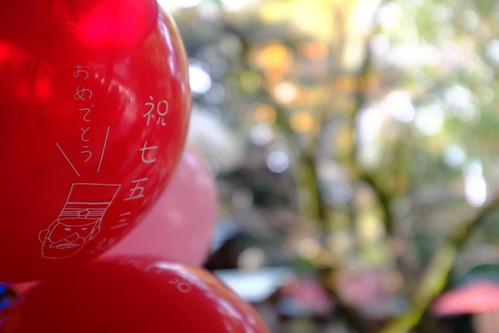Unique side chain and various physicochemical properties. Depending on it, the 20 amino acid residues are grouped into 3 big classes: hydrophobic (F, M, W, I, V, L, P, A), hydrophilic (N, C, Q, G, S, T, Y), and charged (R, D, E, H, K)[12]. We’ve generated PubMed ID:http://www.ncbi.nlm.nih.gov/pubmed/21330118 hydrophobic networks (BN) where the hydrophobic residues are deemed as nodes and link in between them is established if their EMA401 interaction strength exceeds a specific threshold (as defined earlier). Hydrophilic networks (IN), charged networks (CN) and all amino acid networks (AN) are constructed similarly. We ought to once again mention that the BNs, INs and CNs generated right here are based only on the Van der Walls forces. The networks therefore formed have a lot more than 1 subnetwork, using the quantity of nodes varying over a wider variety.Network parametersHere ei would be the total number of edges really connecting the ith node’s nearest neighbors and ki could be the number of neighboring nodes of node i.Largest Connected ComponentEach on the networks is represented as an adjacency matrix. Any element with the adjacency matrix (A), connecting the ith and jth nodes, is given as: aij = 1, if i = j and nodes i and j are connected by an edge, the value is 0 if i = j and nodes i and j aren’t connected or if i = j.Mixing behaviour of nodesAfter the adjacency matrices are constructed at distinctive cutoffs of varying strengths of interaction, they’re subsequently subjected to depth initially search process [30]  to determine their distinct clusters and cluster forming nodes. The giant cluster (defined here as “Largest Connected Component” or LCC) may be the largest group of connected nodes in a network which might be reachable to each other directly or indirectly. The size from the LCC within a network (when it comes to the number of amino acid residues) is determined by the connection (edges) amongst amino acid nodes along with the existence of edge is dependent upon the interaction strength cut-off. As a result, the size of LCC becomes a function of Imin cut-off. We have determined the biggest connected elements and their sizes from adjacency matrices formed at varying cutoffs of strengths of interaction. The sizes of biggest cluster are normalized with respect for the total number of residues in the protein, in order that it is actually no a lot more dependent around the size of your protein.Results and discussionWe have constructed and analyzed hydrophobic (BN), hydrophilic (IN), charged (CN) and all (AN) residues’ London van der Waals speak to networks at 3 unique length scales [long-range interaction networks (LRNs), short-range interaction networks (SRNs) and all-range interaction networks (ARNs)] for each and every with the 495 proteins at unique interaction strength (Imin) cutoffs (see Techniques). Earlier studies showed that the Biggest Connected Component (LCC) is actually a extremely critical parameter in network evaluation, it supplies data on the nature and connectivity in the network [4,31]. The normalized size of LCC when plotted as a function of Imin value, undergoes a transition for all proteins , irrespective of their sizes or folds. The Imin worth at which the size of LCC is half on the size at Imin=0 is termed as Icritical [4,31]. It’s also reported that the values of Icritical fall within a narrow variety for proteins of all sizes and folds [4]. Right here, we’ve got initially studied the nature of transition of diverse subclusters (LRN, SRN, ARN and BN, IN, CN, AN). We’ve got plotted the normalized size from the LCC as a function of Imin (from Imin = 0 to 10 ) for unique subnetworks (Fig.
to determine their distinct clusters and cluster forming nodes. The giant cluster (defined here as “Largest Connected Component” or LCC) may be the largest group of connected nodes in a network which might be reachable to each other directly or indirectly. The size from the LCC within a network (when it comes to the number of amino acid residues) is determined by the connection (edges) amongst amino acid nodes along with the existence of edge is dependent upon the interaction strength cut-off. As a result, the size of LCC becomes a function of Imin cut-off. We have determined the biggest connected elements and their sizes from adjacency matrices formed at varying cutoffs of strengths of interaction. The sizes of biggest cluster are normalized with respect for the total number of residues in the protein, in order that it is actually no a lot more dependent around the size of your protein.Results and discussionWe have constructed and analyzed hydrophobic (BN), hydrophilic (IN), charged (CN) and all (AN) residues’ London van der Waals speak to networks at 3 unique length scales [long-range interaction networks (LRNs), short-range interaction networks (SRNs) and all-range interaction networks (ARNs)] for each and every with the 495 proteins at unique interaction strength (Imin) cutoffs (see Techniques). Earlier studies showed that the Biggest Connected Component (LCC) is actually a extremely critical parameter in network evaluation, it supplies data on the nature and connectivity in the network [4,31]. The normalized size of LCC when plotted as a function of Imin value, undergoes a transition for all proteins , irrespective of their sizes or folds. The Imin worth at which the size of LCC is half on the size at Imin=0 is termed as Icritical [4,31]. It’s also reported that the values of Icritical fall within a narrow variety for proteins of all sizes and folds [4]. Right here, we’ve got initially studied the nature of transition of diverse subclusters (LRN, SRN, ARN and BN, IN, CN, AN). We’ve got plotted the normalized size from the LCC as a function of Imin (from Imin = 0 to 10 ) for unique subnetworks (Fig.
